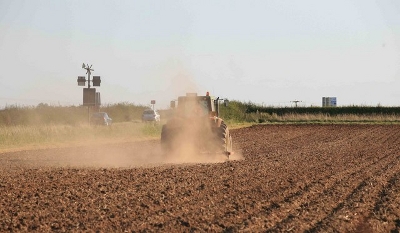SDS & anthropogenic Impact
Anthropogenic Impact
Within the last century land use became a force of global importance with respect to food production, maintenance of fresh water and forest resources resulting in worldwide changes to forests, farmlands, waterways and air.

Land use; Wikimedia Commons
Atmospheric desert dust is potentially highly sensitive to changes in climate and human land use [1].
On the one hand human activities, such as land use practices, can result in additional loading of dust [2]. Model calculations indicate that 50±20% of the total atmospheric dust mass originates from disturbed soils, which are affected by cultivation, deforestation, erosion and frequent shifts in vegetation due to droughts and rains [3]. Especially deforestation is changing the source regions [4].
On the other hand anthropogenically forced climate change substantially influences the amount of available dust and the extent of dust sources due to changes in precipitation, wind strength. regional moisture balance and climatically induced changes in vegetation cover [5].
Publications
[1] N.M. Mahowald, C. Luo; A less dusty future?; Geophysical Research Letters 30(17); 2003
[2] I.N. Sokolik, O.B. Toon; Direct radiative forcing by anthropogenic airborne mineral aerosols; Nature 381, p. 681 – 683; 1996
[3] I. Tegen, A.A. Lacis, I. Fung; The influence on climate forcing of mineral aerosols from disturbed soils; Nature 380, p. 419 – 422; 1996
[4] I. Tegen, M. Werner, S.P. Harrison, K.E. Kohfeld; Relative importance of climate and land use in determining present and future global soil dust emission; Geophysical Research Letters 31; 2004
[5] S.P. Harrison, K.E. Kohfeld, C. Roelandt, T. Claquin; The role of dust in climate changes today, at the last glacial maximum and in the future; Earth-Science Reviews 54, Issues 1-3, p. 43-80; 2001
Publication list in alphabetical order (including publications from above):
bibliography-anthropogenic-impact [pdf, 18 kB]
